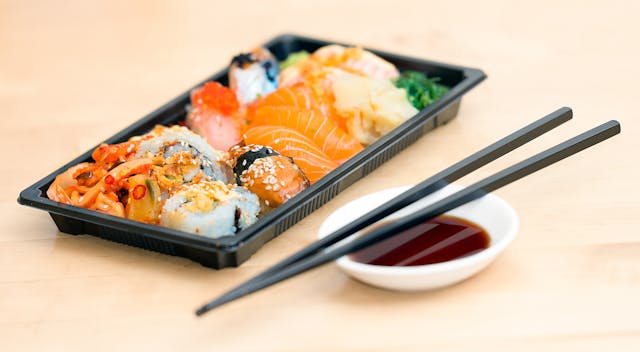Last Updated on May 22, 2024 by Ali Hamza
In the world of Japanese cuisine, the term “amaebi” holds a special place, signifying a delectable delicacy that captivates the taste buds with its unique sweetness and tender texture. In this comprehensive exploration, we will delve into the origins of amaebi, unravel the reasons behind its popularity, discuss the health benefits of incorporating it into your diet, and provide insights into preparing amaebi Japanese style. From the condiments that enhance its flavor to the various techniques of cooking, this article aims to be a guide for both culinary enthusiasts and those eager to discover the wonders of amaebi.
Understanding Amaebi
Origins of Amaebi:
Amaebi, also known as sweet shrimp or spot prawn, has its roots deeply embedded in Japanese culinary traditions. Native to the coastal waters of Japan, this delicacy has been savored for centuries, celebrated for its distinct sweetness and succulent meat.
Popularity of Amaebi:
Amaebi’s popularity extends beyond Japan’s borders, captivating the international culinary scene. The sweet, almost creamy flavor of amaebi distinguishes it from other shrimp varieties, making it a sought-after ingredient in high-end sushi establishments and traditional Japanese kitchens.
Benefits of Eating Amaebi
Nutritional Value:
Amaebi is a rich source of protein, providing essential amino acids necessary for muscle development and overall health. It also contains vitamins and minerals, including vitamin B12, which supports nerve function, and selenium, known for its antioxidant properties.
Low in Calories:
For those conscious about their calorie intake, amaebi is a favorable choice. Its low-calorie content makes it an excellent option for individuals looking to maintain a balanced and healthy diet.
Omega-3 Fatty Acids:
Amaebi is known to contain omega-3 fatty acids, which contribute to heart health and may have anti-inflammatory benefits. Incorporating amaebi into your diet can be a flavorful way to boost your omega-3 intake.
Ways to Prepare Amaebi Japanese Style
Sashimi:
Amaebi is often enjoyed as sashimi, showcasing its natural sweetness and tender texture. The shrimp is typically served raw, sliced thinly, and accompanied by wasabi and soy sauce for dipping.
Nigiri Sushi:
Amaebi nigiri is a classic sushi preparation where the shrimp is placed atop a small mound of seasoned rice and secured with a strip of seaweed. It is often garnished with a touch of wasabi or grated ginger.
Tempura:
Tempura-style amaebi involves coating the shrimp in a light, crispy batter and deep-frying until golden brown. This method adds a delightful crunch to the sweet and succulent shrimp.
Grilled Amaebi:
Grilling amaebi brings out its natural flavors and imparts a smoky aroma. The shrimp can be marinated in a soy-based sauce before grilling to enhance its taste.
Condiments that Pair Well with Amaebi
Wasabi:
The pungent heat of wasabi complements the sweetness of amaebi, creating a harmonious balance of flavors.
Soy Sauce:
Amaebi’s subtle taste is enhanced with a dip in soy sauce, adding a savory element to each bite.
Yuzu Kosho:
Yuzu kosho, a Japanese condiment made from yuzu citrus and chili peppers, adds a zesty and spicy kick that pairs exceptionally well with the sweetness of amaebi.
Ponzu Sauce:
Ponzu, a citrus-based soy sauce, imparts a tangy and citrusy flavor that brightens the overall profile of amaebi dishes.
Things to Do When Preparing Amaebi to Cook
Freshness is Key:
Amaebi (Japanese Prawns)is best enjoyed when fresh. Ensure that the shrimp is sourced from reputable suppliers to guarantee its quality and sweetness.
Gentle Handling:
Handle amaebi with care to preserve its delicate texture. Avoid overcooking to prevent the shrimp from becoming tough.
Shell Removal Techniques:
When preparing whole amaebi, a common technique involves removing the shell while keeping the tail intact for aesthetic presentation in dishes like nigiri sushi.
Tail as Garnish:
The tail of amaebi is often used as a decorative element in sushi presentations. It adds visual appeal and showcases the freshness of the shrimp.
Conclusion
In the realm of Japanese cuisine, amaebi stands out as a culinary gem celebrated for its sweetness and versatility. Whether enjoyed raw as sashimi, showcased in nigiri sushi, or given a crispy twist in tempura, amaebi offers a delightful journey for the palate. As you explore the nuances of this sweet shrimp, experiment with different preparations, savor the richness of its taste, and appreciate the centuries-old tradition that has made amaebi a beloved delicacy in Japan and beyond.


























